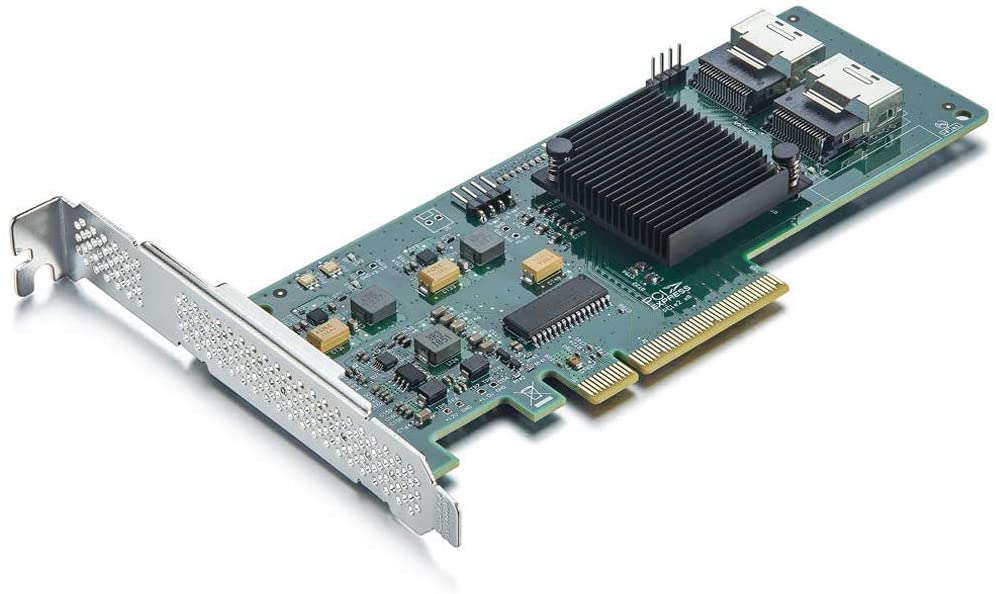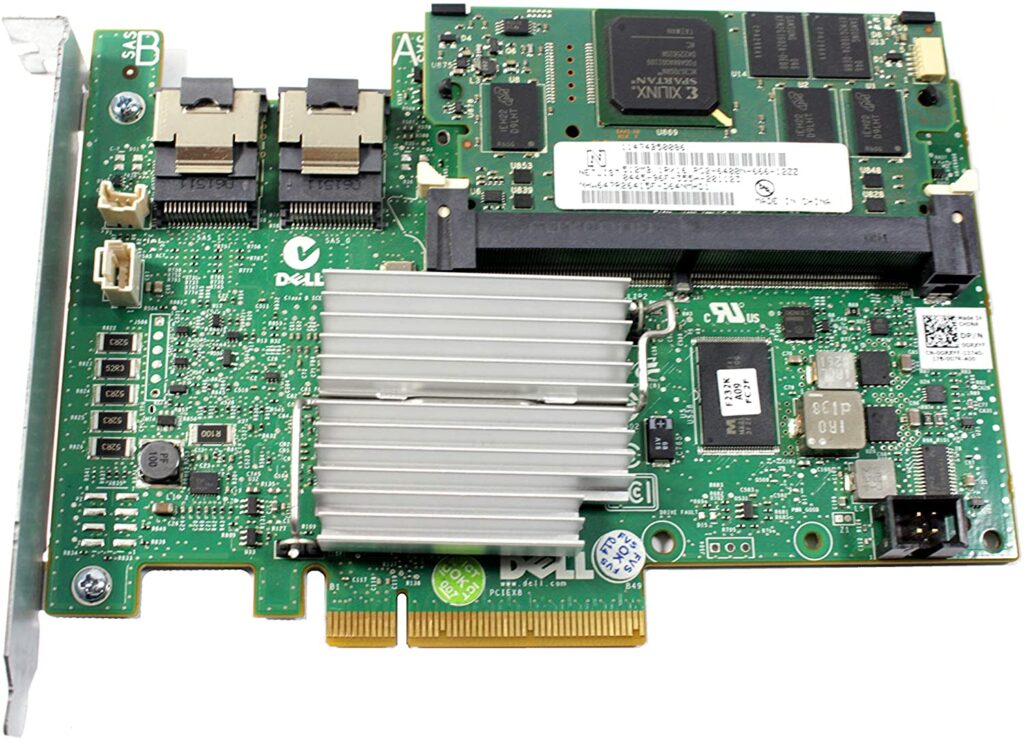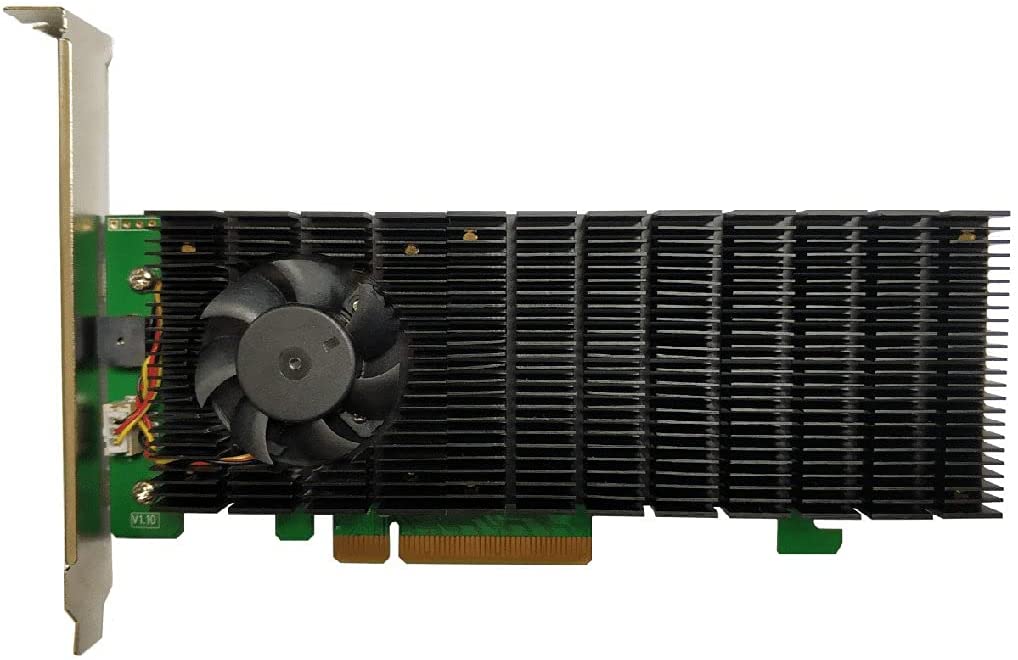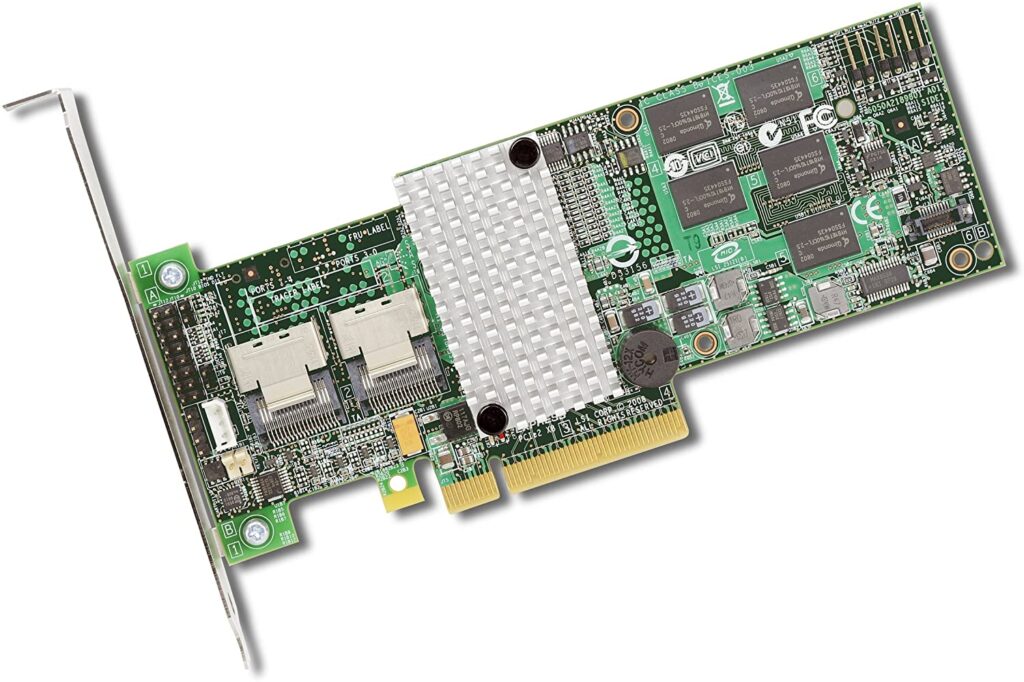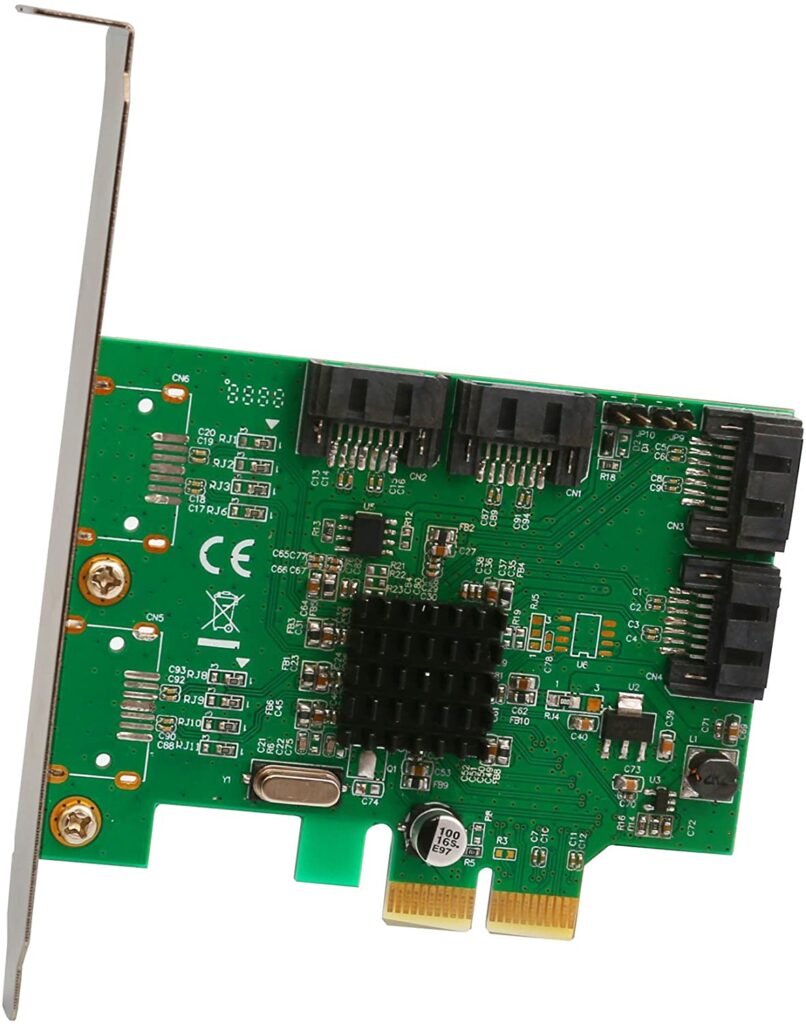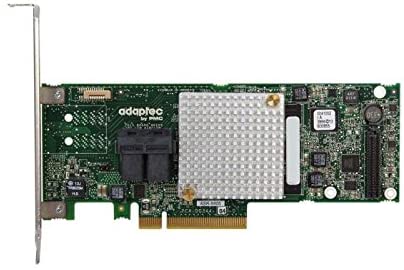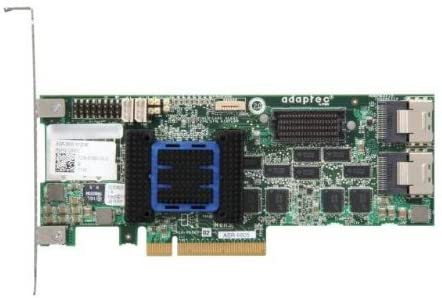RAID stands for Redundant Array of Independent Disks. It is an improved system where different drivers are stacked together. It serves as the finest way to secure your information against hardware failure. The RAID controller is a card or chip equipped with storage drives (usually HDD drives) and OS. RAID provides data redundancy and improves the performance of hard disk drives.
They are booster cards which are a few of the greatest sought-after hardware accessories according to tech nerds and PC enthusiasts. Moreover, RAID controllers boost your PC rate. They are categorized depending on various characteristics like type of drive i.e. SAS or SATA, the number of ports supported, the particular RAID levels, and the number of industries they could help. If you go through the present article, you can pick up the best RAID controller by going through the following selection.
List of The Best RAID Controller
Check out the thorough reviews of the best RAID controller in 2023 below.
1. 10Gtek Internal PCI-E RAID Controller
Being the best RAID controller on this list, the full name of this 10Gtek RAID controller card is SAS 9211-8i PCIe-to-Serial Attached SCSI (SAS) host bus adapter (HBA). It is briefly referred to as 10Gtek SAS 9211-8i HBA. It offers efficient internal storage connectivity for workstations and servers.
It offers 8 lanes of 6Gb/s SAS connectivity as well as matched with 8 lanes of PCIe 2.0 5Gb/s performance. The working of this controller card is dependent on the 10Gtek SAS 2008 controller which integrates the cutting-edge advancements in PCIe 2.0 technology and the 6Gb/s SAS technology.
This RAID controller directly connects to the PCIe bus and produces timing and protocol in conformity with the PCIe specifications. Along with this 10Gtek RAID card, you get a low-profile bracket and a driver CD.
Key Features
- It supports up to 6 G SATA and SAS link rates.
- It supports 256 SAS and SATA devices.
- It is SAS 2.0 compliant.
- Two mini SAS SFF-8087 ports are included.
- PCIe aggregate bandwidth for single-lane (x1) is 5Gb/s (single direction), 10Gb/s (dual direction); for quad-lane (x4) is 20Gb/s (single direction), 40Gb/s (dual direction); for eight-lane (x8) is 40Gb/s (single direction), 80Gb/s (dual direction).
- 6Gb/s SAS bandwidths for half-duplex is 600 MB/s (narrow port one lane), 2400 MB/s (wide port four lanes).
- 6Gb/s SAS bandwidths for full-duplex is 1200 MB/s (narrow port one lane), 4800 MB/s (wide port four lanes).
- Compatible operating systems are Windows, Linux SUSE Enterprise Server (SLES), Linux Red Hat, Solaris, and VMware.
- Dimensions and weight: 8.82 x 5.87 x 1.14 inches; 7.4 ounces.
Pros And Cons
2. Dell 512MB PERC H700 Raid Controller
This Dell RAID controller contains two SAS ports and is designed in a plug-in card form factor. The throughput of 6Gb/s makes sure this controller can boost the performance of your system. Typically, this RAID controller works best for various models of Dell PowerEdge Server.
The third generation of Dell SAS RAID cards is included. This controller belongs to the new generation series of SAS RAID solutions. It can support hard drives with SATA, SAS, and SSD (particularly SATA SSDs). An open slot inside a compatible Dell system is needed if you want to install this PERC H700 RAID controller. Internal PowerEdge memory is supported.
Key Features
- The interface it supports is PCI-e Gen2 x8.
- The size of the internal cache is 512 MB.
Maximum hard drive support is 16 hard drives. - The data transfer rate is 6 Gbps.
- Different RAID levels supported are RAID 0, 1, 5, 6, 10, 50 and 60.
- The total number of SAS ports is 8.
- The backup type is Flash Backed Cache.
- SED (self-encrypting hard drives) and SSD (solid-state drives) are supported.
- The card comes with openmanagetm 6.2 for memory management.
- Connectivity is provided through a 2×4 internal wide port.
- This controller is compatible with Dell PowerEdge T310, T410, T610, T710, R310, R410, R415, R510, R610, R710, R715, R810, R815, R910, C1100, and C2100 servers.
- Dimensions and weight: 8.78 x 4.69 x 1.46 inches; 6.4 ounces.
Pros And Cons
3. Highpoint SSD7202 RAID Controller Card
Highpoint SSD7202 RAID Controller is the industry’s foremost low-profile, ultra-compact bootable NVMe RAID solution for Linux and Windows platforms. This is the reason why it is one of the best RAID controllers on this list. It can offer approx.7,000MB/s transfer speed from a pair of ready-made M.2 SSDs. This controller is implemented with the industry-leading NVMe RAID architecture. It can support mirroring, striping, or single disk configurations for a maximum of 2 M.2 NVMe SSDs.
Key Features
- It comes with PCIe 3.0 x8 interface.
- It is compatible with PCIe x8 and x16 slots.
- RAID 0 minimizes boot-time and maximizes transfer performance up to 2x M.2 SSDs.
- Dimensions and weight: 6.29 x 0.85 x 4.26 inches; 350 grams.
Pros And Cons
4. LSI Logic SAS9260-8I Raid Controller
This LSI Logic RAID controller offers excellent reliability, availability, and performance to those businesses who are encountering storage challenges due to extraordinary data growth. This 6Gb/s MegaRAID controller conveys noteworthy performance improvements in read and write applications, irrespective of the drive speed.
Key Features
- It supports all features of the previous 3Gb/s SATA+SAS generation.
- The cutting-edge RAID-on-Chip technology is implemented and it complies with the PCI Express 2.0 specification.
- Extra security is provided through the LSI SafeStore encryption services.
- Dimensions and weight: 10.5 x 1.75 x 6 inches; 0.4 pounds.
Pros And Cons
5. I/O Crest 4 Port RAID Controller Card
The inclusion of the Marvell 9230 Chipset SI-PEX40057 suggests that this RAID controller can be one of the best RAID controllers if you demand efficient performance. This chipset adds four SATA III ports to a PC via a PCI-e 2.0 x1 slot. Through the comprehensive support for SATA 3.0 HDDs as well as data transfer speeds (up to 6 Gbps), this controller card supports a native PCI Express single chipset which offers performance for SATA 600 MB/s storage requirements.
This adaptable add-in card gives SATA III connectivity 6Gbps while remaining backward compatible with PCIe 1.x. It supports the communication speeds of 6.0 Gbps, 3.0 Gbps, and 1.5 Gbps.
Key Features
- Four internal SATA 6Gb/s ports are included.
- It is compatible with SATA 6G, 3G, and 1.5G hard drives.
- It is backward compatible with PCIe 1.x.
- PCI-Express x1 interface is found compatible with the PCI-Express x2, x4, x8, and x16 slots
- Supported RAID modes are RAID 0/1/1+0.
- Dimensions and weight: 5.6 x 4.8 x 1.6 inches; 5.4 ounces.
Pros And Cons
6. Adaptec RAID Controller
This Adaptec RAID controller supports 8 connected devices, 4K native drives, and UEFI boot support. It works significantly faster than old generation Adaptec cards.
Key Features
- The data transfer speed is 12Gb/s per port.
- The bus system interface is 8-lane PCIe Gen3.
- The size of cache memory is 1024 MB.
- List of compatible operating systems: Microsoft Windows, SUSE Linux, Red Hat Linux, Fedora, Ubuntu Linux, Debian Linux, FreeBSD, Sun Solaris, and VMware ESXi.
- Additional features are auto hot spare configuration, hot spare assignment, and auto rebuild configuration.
- Dimensions and weight: 6.6 x 1.65 x 2.54 inches; 3.53 ounces.
Pros And Cons
7. Adaptec RAID 6805E Storage Controller
Belonging from the Series 6E of Adaptec, this 6805E RAID controller conveys the toughness of hardware RAID, full OS support, and enterprise-class management features. Its extremely compact design offers ease of setup.
Key Features
- Data transfer speed is up to 6 Gb/s.
- SAS 2.0 interfaces and PCIe host connections are supported.
- Supported RAID levels are RAID 0, 1, 1E, 10.
- Dimensions and weight: 1 x 1 x 1 inches; 3.52 ounces.
Pros And Cons
How To Pick The Best RAID Controller?
You must know the important parameters to consider before buying a RAID controller. After assessing your needs and budget, you can determine the best RAID controller that suits your needs.
1. RAID Levels
RAID 0
It is excellent for enhancing the speed and reducing redundancy. With the inclusion of disk striping, it categorizes data between multiple drives. So, it improves performance.
RAID 1
The RAID 1 controller secures data with the enhanced speed because the information is mirrored twice. Minimum of two drives are required to work. RAID 1 is a cost-effective alternative if you want to boost speeds with data redundancy. Furthermore, it is a suitable amount of protection and offers improved uptime. Note that RAID 5 and 6 might not be perfect for writing functions. Hence, if you want to write more, you must choose RAID 1.
RAID 10, also known as RAID 1+0
This type of RAID controller requires a minimum of 4 drives that split data among themselves to boost speed and redundancy. To boost overall performance, RAID 10 or 1+0 controller is an ideal choice. However, it is the most expensive one. The price is worthwhile considering the decent redundancy and excellent reading and writing speeds.
RAID 3
Raid 3 uses separate disks to retain the parity information.
RAID 4
It is suitable for only sequential access to data.
RAID 5
It maintains an excellent balance between speed and redundancy. It requires at least 3 drives. Moreover, it strips data across multiple drives to restore data when a failure takes place.
RAID 6
RAID 6 is known to be the reliable one of all modes. It can save two disks from failing because it contains two parity-driven strips. For this RAID type, SATA drives works best. If you demand high reading operations then RAID 5 or 6 are more convenient options.
2. Number of RAID controllers required
The number of RAID controllers you require differs based on applications. If you choose RAID 5, at least 3 drivers are needed. RAID 10 and RAID 6 need at least four drives. These many drives are the required numbers required for such controller cards to offer appropriate redundancy, disk space, and enhanced performance.
If you want to expand your storage, performance, or redundancy, you could add more array disks to the operating system. Note that adding extra RAID controllers also increases the costs.
3. The number of disks in a RAID array
You need to determine the number of disks present in your RAID array and whether you want to add more later or not. You must calculate whether you would require more storage devices in the future and the number of disks you will need. Each RAID controller comes with the upper limit of storage devices you can connect to it. Hence, you should know the amount of storage required.
4. Hardware RAID Or Software RAID
Software RAID removes the need for adding a physical card to the CPU. Compared to hardware RAID, they are cheaper. Conversely, hardware RAID provides extra advantages like outstanding processing power, improved cache, improved redundancy, support for power failure, enhanced storage, and more. These benefits come at a cost and so hardware RAID is expensive.
For Windows based systems, a hardware RAID is recommended. This is because they can boost your overall performance. With a hardware RAID, you don’t need to worry about the circumstance when you have plenty of SATA SSDs. They are compatible with any modern RAID controller and support relies on the type of port being used. Note that NVMe SSDs can be only used with specific RAID controller models which are equipped with M.2 slots on the card.
FAQs When Picking The Best RAID Controller
1. When do you require a RAID controller?
If you want that your PC deliver reliability and data redundancy then you require one of the best RAID controller. Occasionally, you want to backup your data and it could be extremely time-consuming. You may also find hassles when you want to restore your backups. Occasionally restoration of data can lead to data loss or failure. With the use of a RAID controller, you can prevent the risk of data loss.
RAID controller also provides comprehensive data backup and restoration in less time. Also, it can solve input/output issues. A RAID controller provides extra throughput when reading/writing data from multiple drives simultaneously.
2. What is OS and hardware compatibility in a RAID controller?
A RAID controller card must be compatible with your motherboard and operating system. The majority of them support Linux and Windows. In some cases, board compatibility may be an issue. The majority of RAID controller cards are officially compatible with only server-grade motherboards. Hence, the use of RAID on a standard motherboard will limit your choices. Before purchasing a RAID controller, make sure it is fully compatible with your motherboard and OS.
Final Thoughts
A RAID controller is an autonomous device that permits you to manage multiple HDDs or SSDs within your PC. The best RAID controller ensures that your PC runs better and secures your data in the occurrence of the loss of your drive. It increases speed, reduces redundancy, and boosts the overall performance of your system.
Enjoyed this RAID controller review? Then be sure to check out our other guides.







